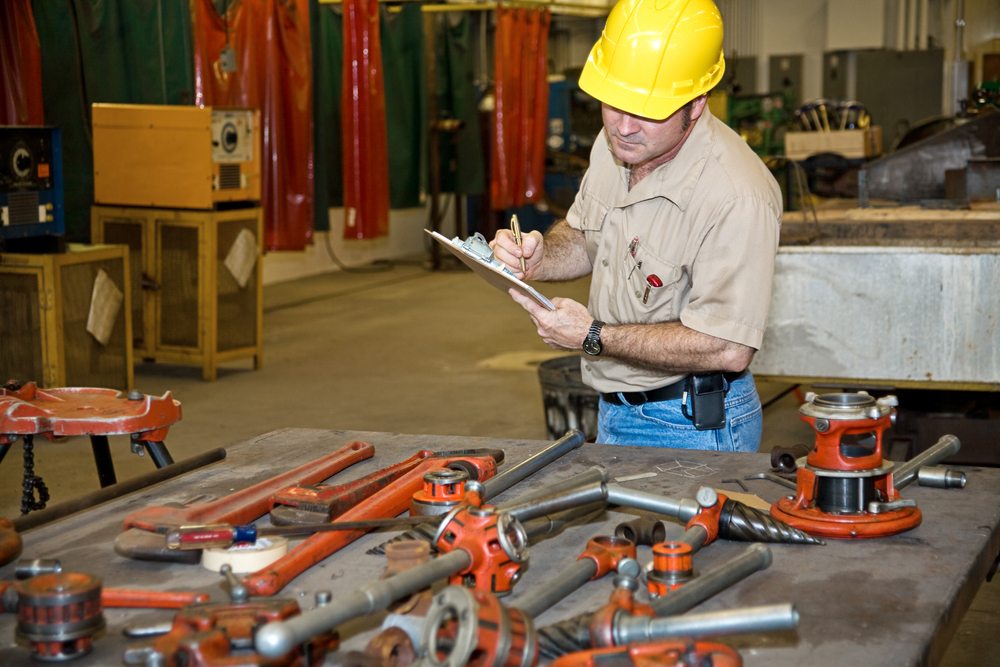Just How Welding Assessment Adds to Long Life and Dependability in Construction Tasks
Welding assessment serves as a foundational aspect in making certain the longevity and reliability of construction tasks. By methodically determining potential issues during different stages of production, welding assessments not just prevent expensive failings however also foster a culture of top quality guarantee within the team.

Relevance of Welding Inspection
Ensuring high quality via welding evaluation is an essential part of any type of fabrication job. It functions as a safeguard to validate that welding procedures fulfill well established criteria and specs, consequently improving the overall honesty of the structure or part being made. Welding inspection is not simply a step-by-step action; it is an essential method that helps identify potential problems early, making sure that they are dealt with prior to they escalate into significant problems.
The importance of welding evaluation can be emphasized by its role in maintaining safety and longevity. Welded joints are commonly subjected to severe problems, and any defects can jeopardize the performance and durability of the final product. By carrying out strenuous inspection procedures, companies can ensure compliance with industry guidelines, thereby lessening dangers associated with architectural failures.
Additionally, reliable welding assessment fosters self-confidence among stakeholders, including customers and regulative bodies, that the project satisfies the finest quality requirements. This not only improves the reputation of the producer yet additionally adds to long-term price financial savings by avoiding rework and possible obligations. Eventually, welding inspection is integral to the success and reliability of fabrication jobs, enhancing the worth of quality control in engineering practices.

Common Welding Defects
Welding flaws can considerably weaken the architectural stability of made elements, making their recognition and correction crucial. Typical welding issues can be broadly categorized into three types: geometric, metallurgical, and service-related.
Geometric issues include concerns such as undercutting, where the base steel is worn down beside the weld, and excessive convexity, which can result in tension focus points. These defects can compromise the strength and toughness of the weld joint.
Metallurgical defects emerge from incorrect welding procedures or materials, causing troubles such as porosity, where gas pockets develop within the weld, and lack of combination, which happens when the weld steel stops working to bond correctly with the base steel. These concerns can dramatically damage the weld's effectiveness.
Service-related issues may not come to be noticeable until after the component is in usage. Examples consist of splitting because of thermal stress and anxiety or exhaustion, which can lead to catastrophic failings if not dealt with.
Comprehending these typical issues encourages producers to implement efficient evaluation methods that boost the dependability and durability of their jobs, inevitably making certain security and efficiency requirements are fulfilled.
Examination Techniques and strategies
A comprehensive approach to examination techniques and techniques is essential for determining and alleviating welding defects in manufacture jobs. Numerous techniques are used to guarantee the honesty of welds, including visual evaluation, ultrasonic screening (UT), radiographic testing (RT), magnetic fragment testing (MT), and dye penetrant screening (PT) Each strategy has its toughness and certain applications.
Magnetic bit testing is useful for detecting surface and near-surface defects in ferromagnetic products. By using a magnetic area and making use of ferrous bits, assessors can identify stoppages properly. Last but not least, dye penetrant screening highlights surface-breaking defects through the application of a color that permeates into fractures, making them noticeable under ultraviolet light.
Utilizing a mix of these methods guarantees an extensive analysis, boosting the reliability of bonded structures.

Influence on Task Durability
Reliable evaluation methods significantly affect the longevity of construction tasks. By identifying possible problems and inconsistencies in welding processes, evaluations guarantee that structures are constructed to withstand functional tensions with time. When welds are extensively taken a look at, the chance of unseen issues, which could lead to architectural failings, is minimized.
Routine inspections facilitate adherence to sector standards and laws, which are essential for making sure the resilience of bonded joints. Such compliance not only enhances the honesty of the project but also reassures stakeholders concerning the high quality of the work. Furthermore, prompt detection of problems permits corrective actions to be taken review early, preventing costly fixings or complete overhauls down the line.
Additionally, reliable examination methods cultivate a culture of high quality assurance within manufacture groups. When workers realize that their job will be carefully reviewed, they are most likely to comply with finest techniques and maintain high standards throughout the production process. Eventually, this dedication to top quality not only extends the lifespan of the project however likewise minimizes maintenance expenses, consequently improving the total financial feasibility of manufacture undertakings.
Enhancing Integrity in Manufacture
Dependability in construction is substantially improved official statement through rigorous examination procedures that deal with prospective weaknesses in welding techniques. Efficient welding evaluation not just recognizes problems early however additionally gives essential responses to welders, making sure adherence to established specs and criteria. By using non-destructive testing approaches, such as radiographic or ultrasonic evaluations, makers can establish the integrity of welds without endangering the material.
Furthermore, normal assessments foster a society of quality and liability among manufacture teams. They are extra likely to stick to ideal practices and procedures when welders recognize that their work is subject to strict analyses. This proactive technique reduces the risk of costly failings during the functional phase of a task.
In addition, extensive paperwork of assessment results develops a beneficial repository of details that can be used for future jobs. Trends in flaws can be evaluated reference to enhance welding techniques and training programs (Welding Inspection Milwaukee). Eventually, boosting integrity in fabrication via thorough assessment processes not just boosts the lifespan of the made components yet additionally strengthens stakeholder self-confidence in the project's overall top quality and resilience. Purchasing robust welding evaluation techniques is crucial for attaining long-term integrity in any type of manufacture undertaking.
Verdict
In recap, welding evaluation serves as an essential part in guaranteeing the longevity and integrity of construction projects. By recognizing problems early and employing non-destructive screening methods, inspections cultivate a culture of top quality assurance that abides by industry standards. The organized documents of outcomes not just promotes pattern evaluation yet additionally improves accountability and structural honesty. Ultimately, efficient welding inspection techniques reinforce stakeholder confidence and considerably add to the economic stability of fabrication undertakings.
Welding examination serves as a foundational component in making certain the longevity and dependability of construction tasks.Ensuring quality through welding assessment is a crucial element of any type of manufacture task. Inevitably, welding inspection is essential to the success and dependability of construction jobs, strengthening the worth of high quality guarantee in design methods.
A detailed technique to examination strategies and approaches is crucial for mitigating and identifying welding defects in fabrication tasks.In recap, welding examination offers as a crucial element in ensuring the long life and reliability of manufacture jobs.